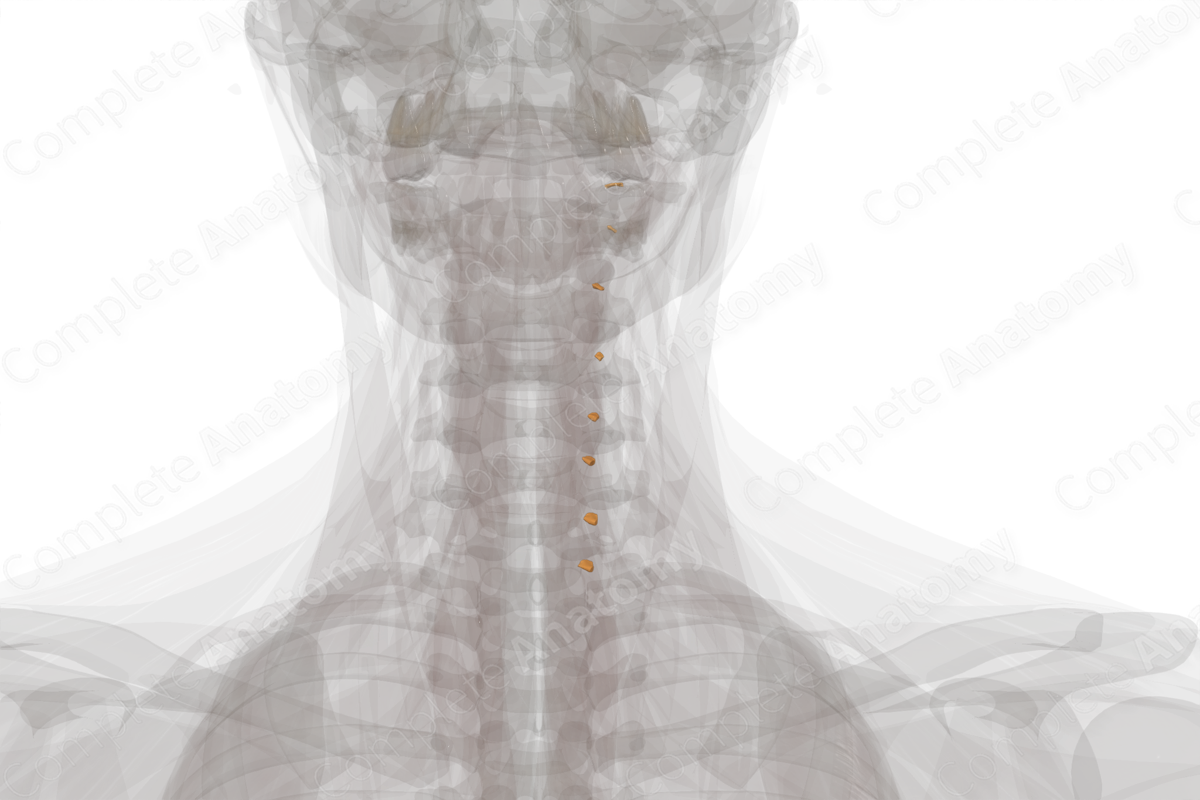
Description
The cervical nerves refer to the pairs of spinal nerves that emerge from the intervertebral foramina of the seven cervical vertebrae. Since there are eight pairs of cervical nerves and only seven corresponding cervical vertebrae, the first seven nerves exit the intervertebral foramina superior to their corresponding numerical cervical vertebrae. The eighth nerve exits the intervertebral foramen below the seventh cervical vertebra (between C7 and T1 vertebrae).
The cervical nerves are highly segmental. Posterior (dorsal) sensory roots and anterior (ventral) motor roots merge to form the cervical nerves, which quickly branch into posterior (dorsal) and anterior (ventral) rami.
The cervical nerves send posterior rami to innervate the epaxial musculature of the posterior aspect of the neck, and cutaneous branches to the overlying skin.
Anterior rami that contribute to neck innervation give rise to the cervical plexus and the ansa cervicalis. The branches of the cervical plexus are cutaneous and serve the skin of the neck. The ansa cervicalis is a loop of fibers derived from the first through third cervical anterior rami and innervates most infrahyoid muscles of the anterior neck.
The phrenic nerve, which serves the diaphragm is derived from anterior rami of the third to fifth cervical nerves (C3-5) and descends through the neck.
Cranial nerves VII, VIII, IX, X, XI, and XII (or facial, vestibulocochlear, glossopharyngeal, vagus, accessory, and hypoglossal nerves, respectively) all innervate structures in or around the neck, including muscles, viscera, vasculature, and glands.
Learn more about this topic from other Elsevier products





